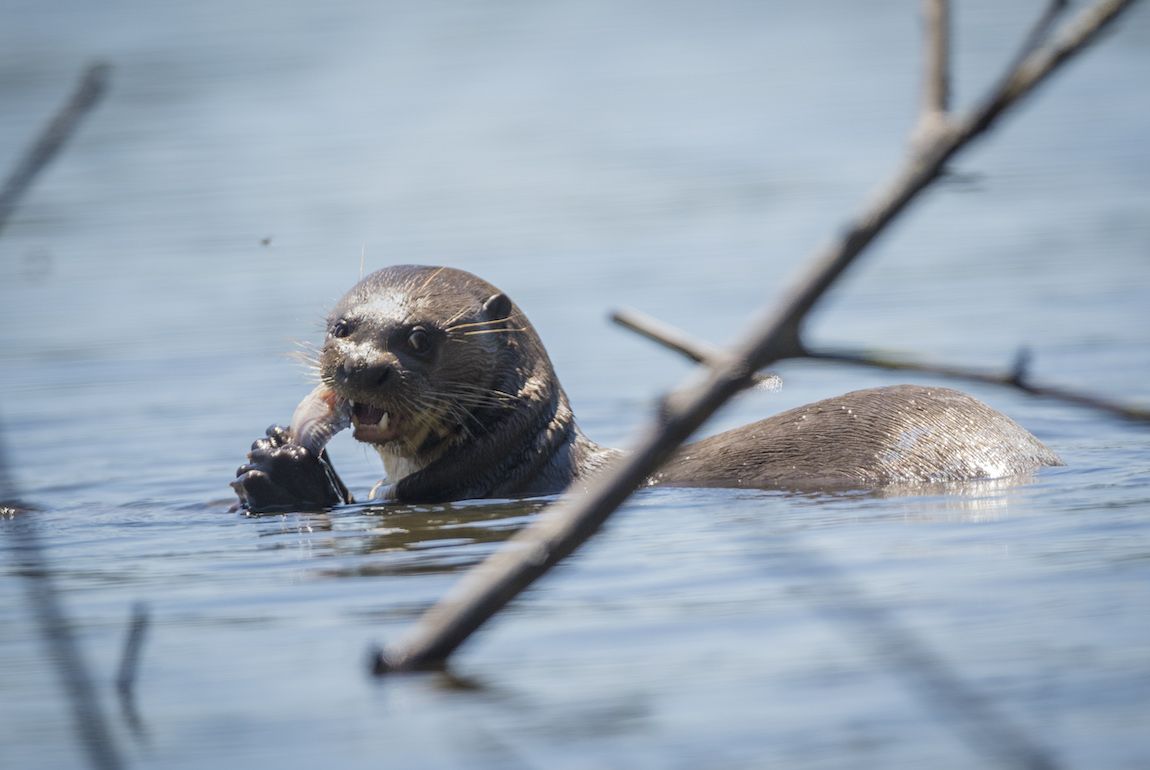Meet the Giant River Otter. These semi-aquatic creatures live up to their name as the largest otters on earth – they weigh up to 70 pounds and can grow to 6ft long. The Giant River Otter is a sociable creature who lives in families of 3-10 members, banding together to protect themselves and their territories. Giant River Otters are apex predators, partially due to these impenetrable family groups, and use 22 different vocalisations to communicate to one another. Some research has even shown that each family of Giant River Otters has its own unique audio signature!
Giant River Otters are native only to the Amazon, Orinoco and La Plata river systems of South America, and their habitat is primarily flooded forests, slow moving rivers, streams, lakes and swamps. These otters make their homes on stable riverbeds, spending their days hunting fish and nights sleeping in dens hidden under root systems or fallen trees. To catch the 6-9 pounds of food they require each day, Giant River Otters use their strong tails, muscly bodies and webbed feet to zip through the water in search of their prey, closing their nostrils and ears underwater.
The thick, soft fur that is unique to these incredible creatures has sadly also been their downfall. Between 1950 and 1970, Giant River Otters were subject to extreme exploitation with Peru alone exporting 20,000 of their pelts. By 1973, when trade of their pelt was prohibited, Giant River Otters where all but eliminated in South America. But the threat for the few remaining didn’t end there.
Habitat loss and water pollution now threaten to wipe out the Giant River Otter completely. Listed as endangered by the IUCN, today, there are fewer than 5,000 remaining in the wild. One of the last strongholds of these majestic animals is Peru’s Tambopata-Bahuaja Biodiversity Reserve project, where Giant River Otters are surviving in remote, protected waters, far from human activity. The project is protecting their key habitat through major conservation efforts aimed at driving a transformative economic transition for communities on the borders of the reserve. By supporting alternative, sustainable livelihoods to deforestation and polluting resource extraction and agricultural production, the project is building an essential financial incentive to protect and conserve the critical habitat of the Tambopata-Bahuaja Biodiversity Reserve. There’s hope that the 590,000 hectares of the reserve will provide Giant River Otters with an opportunity to rebuild their numbers, but this lies in the continued conservation of their home.
Read more about the work we are doing at the Tambopata-Bahuaja Biodiversity Reserve project here.
